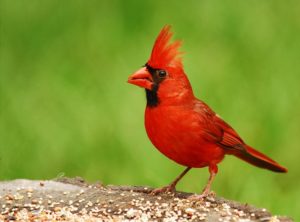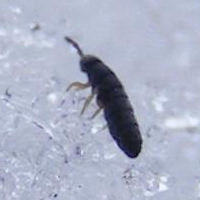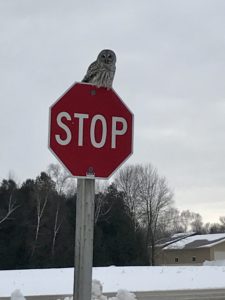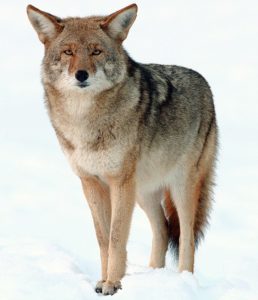by Kennedy Zittel, Woodland Dunes land management intern
Even though the temperatures will warm soon, as I am writing this, the temperature is hovering at a toasty 7℉ which is the highest it has been for the past few weeks. This cold spell has really had me appreciating warm socks and lots of layers of blankets. Looking outside though, I can’t help but feel sorry for all of the animals out in the freezing cold. Granted, I know that they are well adapted for the weather if they are still here in the winter. In fact, bird’s feathers have amazing insulating capabilities. If you notice birds looking puffed up or a bit fluffier than usual, it is due to them contouring their feathers to create more airspace between their bodies and the outside air. This trapped air acts as insulation for the bird. Sort of like how we put on extra layers of clothes in the winter, each layer puts our bodies further from the cold air, as well as adding more insulation of course. Even though the birds still here are clearly well adapted to surviving the freezing Wisconsin weather, there are ways that we can help them survive and thrive in the winter.
There are many ways that we can help birds in winter. One thing that I personally think is very important is a water source. Birds technically can use snow as their water source, but the process of converting snow into water uses up a lot of calories that the birds really should be allotting for staying warm. Heated bird baths are a great option for keeping a reliable source of water available for birds when the weather gets below freezing. Placing large rocks in the bird bath will not only give extra standing space for birds to drink from, but also keeps them from attempting to bathe in the water, as you could imagine this weather is no time for an outside shower…Brr!
Another good way to help birds in winter is to provide them with good quality food. High-energy foods such as black oil sunflower seeds, suet, peanut butter, mealworms, etc. give birds a good boost of energy during the winter. Instead of feeling  bad about extra snacking in winter, I like to imagine that it is just our way of trying to give us a good boost of energy on cold winter days too. Scattering seeds in sheltered places will also help birds that are not adventurous enough to want to go eat in the open at bird feeders to get a good meal. Some bird species actually prefer eating in thickets, brambles, brush piles, and other secure areas. I know here at Woodland Dunes, when we put seed out under the ninebark shrubs the Juncos and Tree Sparrows happily choose that location to feed rather than at the bird feeders.
bad about extra snacking in winter, I like to imagine that it is just our way of trying to give us a good boost of energy on cold winter days too. Scattering seeds in sheltered places will also help birds that are not adventurous enough to want to go eat in the open at bird feeders to get a good meal. Some bird species actually prefer eating in thickets, brambles, brush piles, and other secure areas. I know here at Woodland Dunes, when we put seed out under the ninebark shrubs the Juncos and Tree Sparrows happily choose that location to feed rather than at the bird feeders.
Providing roosting boxes or natural plant coverage like a brush pile, old christmas tree, etc. can help birds by providing shelter from the cold weather but also can help protect them from natural predators. Placing wood shavings, dry grass, and other nesting materials in the roosting boxes and houses can help keep birds warm, similar to how we would want to sleep under the covers on cold winter nights. Looking outside, the birds seem to be oblivious to the cold as they sing their songs and eat at the feeders. Though I still do feel a bit sorry for them all sitting out there when the temperature is this cold…I can’t help but also be a bit envious. The birds are out there enjoying nature with the happiest of attitudes, whereas when it gets this cold I usually require many layers and some good persuasion to make me want to go outside!
photo- northern cardinal from US Fish and Wildlife Service



